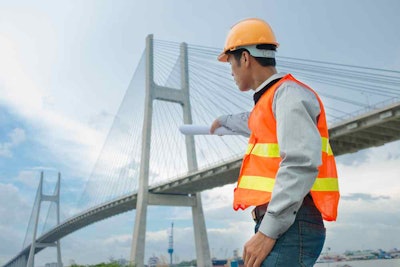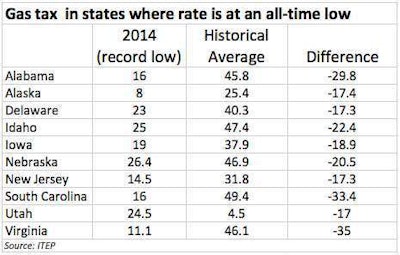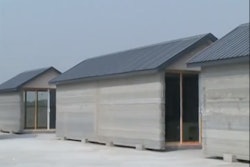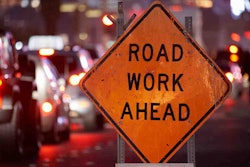
Buzz about infrastructure investment continues today as a number of reports and statements are released.
The Brookings Institution released a report today on infrastructure employment, and earlier this week AAA pushed for a gas tax hike, 50 Chambers of Commerce urged Congress to fix the Highway Trust Fund (HTF) and the Institution on Taxation and Economic Policy (ITEP) reported on the declining value of state gas taxes.
Beyond shovel-ready

The report suggests that in order to determine the jobs that are included in infrastructure, it is important to define what exactly infrastructure is. The report offers the following definition:
“In general, infrastructure encompasses a broad range of systems and facilities designed, constructed, operated, and governed across the public and private sector. Foundational in nature, these physical assets are either manmade or natural, often operate as part of larger networks, support a variety of economic activities, and provide a host of other services with a clear public benefit over the course of many years.”
It also divides infrastructure into seven sectors, defining each:
-
Intra-Metro Transportation: local roads and bridges, public transit (subways and buses), taxis and limousines, sightseeing transportation and bicycle/pedestrian infrastructure
-
Inter-Metro Transportation: passenger rail, airports, highways and inter-urban and rural bus transportation
-
Trade and Logistics: freight rail, air cargo operations, trucking, seaports/inland waterways, transportation support and warehousing and express/local delivery services
-
Energy: the generation, transmission, and distribution of energy from natural gas (pipelines), facilities responsible for electricity (nuclear, hydroelectric and solar/wind) and other utilities
-
Water: clean/drinking water, stormwater, wastewater, sewage/water treatment facilities and “green” infrastructure for conserving related natural resources
-
Telecommunications: broadband and transmission infrastructure (wired, wireless and satellite), concentrated in facilities outside radio and television broadcasting
-
Public Works: streetscapes, land redevelopment and waste/landfills (solid waste, hazardous materials and remediation)

According to the report, 14.2 million workers, or 11 percent of the nation’s workforce, had jobs related to infrastructure in 2012. Among them, only 6 percent are involved with design and 15 percent with construction. The majority (77 percent) are primarily involved with operation.
Other findings include:
-
A combined total of 9.1 million infrastructure workers (64 percent of the U.S. total) are employed in the 100 largest metropolitan areas
-
Infrastructure jobs offer more than 30 percent higher wages than jobs at lower ends of the income scale ($24,750 and $30,190 annually, versus $18,090 and $22,480 annually)
-
Infrastructure occupations offer higher median wages ($38,480) than the national median ($34,750)
-
With a 2.5 ratio of wages earned at the 90th and 10th percentile, infrastructure offers a more even distribution compared to other occupations in the U.S.
-
12 percent of infrastructure workers hold a bachelor’s degree or higher
-
For 57 percent of infrastructure employees, the highest level of education is a high school diploma or less
-
67 of the 95 infrastructure occupations only require a high school diploma or less for entry
-
59 of the 67 occupations (including paving equipment operators) pay higher wages to workers at the 10th percentile than nationally
-
73 of the 95 infrastructure occupations (10 million workers) require short- or long-term on-the-job training, or an apprenticeship
-
Nearly 6 million workers in 64 of the 73 occupations earn higher wages at the 10th and 25th percentile
-
Infrastructure jobs are expected to increase 9.1 percent in the next 10 years
-
2.7 million workers (23.4 percent) will need to be replaced in the next decade
-
1.1 million workers are projected to be added to the infrastructure workforce through 2022.
Increase the federal gas tax
In a statement on the Senate Environment and Public Works (EPW) Committee’s upcoming highway bill — set for release on Monday and markup on Thursday — AAA President and CEO Bob Darbelnet called for a federal gas tax hike.

“AAA, along with a broad set of stakeholders, recommends a federal gas tax increase as the most viable and effective option, provided the additional funds are thoughtfully invested in transportation improvements that ease congestion and increase safety,” he added.
This is not the first time AAA has pushed for an increase in the federal gas tax.
Last year, the company backed a proposed bill in the House that would have raised the federal gas tax by $0.15 per gallon. That bill did not pass.
And in April, AAA Auto Club Vice President of Public Affairs Kathleen Bower criticized the GOP’s proposed budget, noting deep cuts in transportation funding. Bower suggested a gas tax hike as an alternative, “fiscally responsible proposal.”
State gas tax values decline
 Click to view large image
Click to view large imageThe federal gas tax is not the only concern. A report released this month from ITEP points out that the value of the gas tax in 10 state is at an all-time low.
The report shows that gas tax rates are at an all-time low in Alabama, Alaska, Delaware, Idaho, Iowa, Nebraska, New Jersey, South Carolina, Utah and Virginia.
Each of these states is currently levying its gas tax at a rate that is lower that its historical average. See the chart to the right for details.
The report notes that lawmakers in some of these states have considered raising the gas tax. Among those are Delaware, where Gov. Jack Markell proposed a 10-cent increase in the state’s gas tax and accounting for inflation; Iowa, where Gov. Terry Branstad has suggested gradually raising the gas tax; and Utah, where the state Senate passed a gas tax reform this year (however, the House did not act on it).
Additionally, New Jersey’s Assembly speaker and South Carolina’s Senate Finance Committee chairman have voiced support of gas tax increases.
For more information, including charts, click here.
Dear Congress: Fix the Highway Trust Fund
In a letter on Wednesday, 50 state Chambers of Commerce urged Congress to “address the impending insolvency of the Highway Trust Fund.”

The chambers asked Congress to look for funding sources, noting that HTF insolvency affects state and local projects.
“Without a sustainable source of funding, the Trust Fund will be in a deep deficit that will require major cuts in federal highway and transit funding or a potential halt of the entire federal transportation program,” the the chambers write. “Indeed, many states have already halted certain projects in anticipation of such cuts. We need your support to ensure the viability of this critical component of the nation’s economy, including its ability to accelerate the all too slow recovery of the jobs lost since the onset of the deep recession that started in 2008.”
“Municipalities, counties, and states across the country are stepping up to identify sources of additional transportation revenue,” they continue. “However, without a strong federal partner, we will not be able to meet the demands of maintaining and expanding our transportation systems on which robust national and local economies depend.”
To read the full letter, click here.









